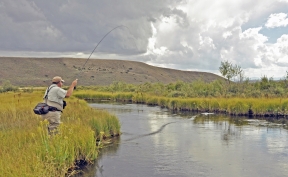
It’s time to start looking at what to expect for the upcoming season. Even though our snowpack and water year are below average, it is much better than in was earlier in the winter. Our reservoirs were in great shape at the end of last season. Island Park Reservoir ended the irrigation season with about 20% more storage that average. The current year began in October at over 88,000 acre feet compared to an average of just under 61,000 acre feet. The flow from Island Park Dam has remained above average since the start of 2024.
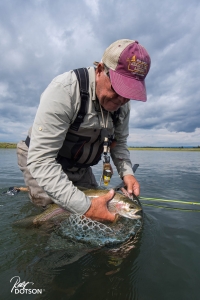
Snow pack is not the only thing that influences our fishing. The timing of the runoff is a terrific influence. For example, last year followed a good water year. Last year the flow from Island Park Dam was a little nuts. Our salmonfly hatch occurs anywhere from the middle of May to the end. This year it came early because we had an early spring. Our flow shot up to almost 2000 cfs in later April. (More about that later.) The erratic flows also hurt our salmonfly hatch in May. Early spring weather and low stream flows resulted in a salmonfly hatch earlier than normal. The crazy flow dropped back to average around the 1st of June and then erratically bounced around from the opening of the Ranch until the end of June. It dropped to well below average throughout most of September. It was back to near average by the end of the month.
I can’t remember a season with more variation in stream flow. This can have a dramatic effect on our fishing, especially in the Harriman Ranch section. The Henry’s Fork Foundation always gets a lot of criticism when inconsistent flows mess up the fishing. The fact is, the HFF has made great strides in keeping more water in the reservoir and more favorable winter flows. They have limited influence on the flow during the course of the summer season. Irrigation demand and weather are key factors that influence flows.
The good news is there was enough storage water for a flush from the dam in late April. This is a godsend to aquatic insects. Most mayflies, caddisflies, and stoneflies thrive with clean gravel. The river had a lot of turbidity in 2022. One benefit of that issue likely pushed more sediment out of the slow water sections of the river.
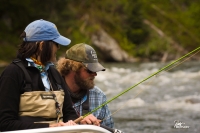
Looking ahead our snowpack is about 10% below average. It could go higher or lower as there is another month or so of winter left. I don’t expect the snowpack to have as much of an influence this year because the reservoir is almost full. This is the kind of year when spring weather can have a terrific influence. When water is stored in snow it is like another storage reservoir. It hurts if it melts early. Tributary streams, especially Fall River and the Teton, supplement the flow from Island Park. A late spring results in delaying our runoff and provides enough water for demand without drawing flow from the Island Park Reservoir.
I expect the fishing will be better this season, especially on the Henry’s Fork. The winter flows have been above average all winter. There is mountains of research that proves more water in the winter equals the survival of more young-of-the-year trout. There is no research, that I’m aware of, on survival of adult trout but I firmly believe that older trout that would likely die, survive to live another year.
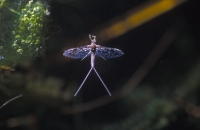
I’ve already mentioned the flush that occurred in late April. During my research for my book, Spring Creeks, I spent a lot of time with Dr. George Edmunds at the University of Utah. He helped me realize that clean gravel produces more aquatic insects. Originally I thought aquatic vegetation favored insect hatches. There are four groups of mayfly nymphs: crawlers, clingers, swimmers and burrowers. The Brown Drake is the only burrower on the Ranch. Blue Winged Olives, Callibaetis, and Gray Drakes are swimmers. March Browns are our major clingers. Our most significant mayflies on the Ranch are crawlers. This group includes Green Drakes, PMDs, Flavs, Tricos and Mahogany Duns. These mayflies thrive in clean gravel. I expect there will be an improvement with these important mayflies this season.
Caddisflies are split into three groups: case makers, net makers and free-roaming. In June and July our most significant caddisfly family is Hydropsychidae, commonly known as the Spotted Sedge. The larvae are net-makers. They thrive in clean gravel where they build a little net to capture debris for food. Their habitat is destroyed when sediment fills in the interstitial spaces in the gravel. Case makers, like Brachycentrus (Mother’s Day Caddis) also do much better in clean gravel. Stoneflies also favor clean gravel. Most aquatic insects are impacted when the bottom structure gets polluted with silt and sediment.
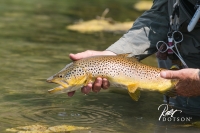
If I could predict the weather, I could tell you exactly when you should fish the Henry’s Fork, Madison, South Fork and the other great waters in our region. Everything looks on track right now for a great season. We know we’ll have better winter survival of juvenile trout which will improve the numbers of larger trout over the years ahead. There is no doubt Island Park and other reservoirs in the system will fill. The big variable will be the timing of the spring run-off and the weather throughout the season.